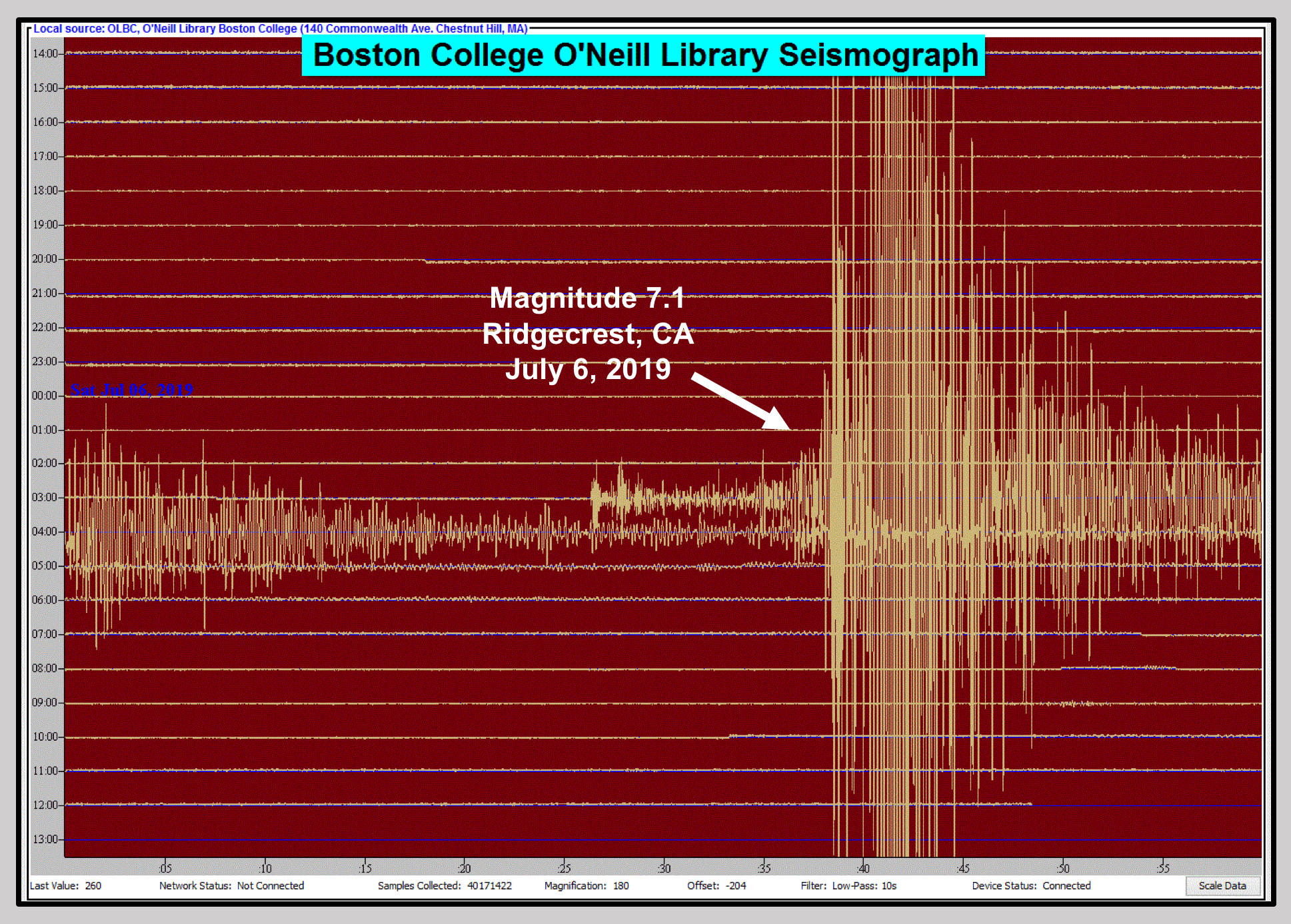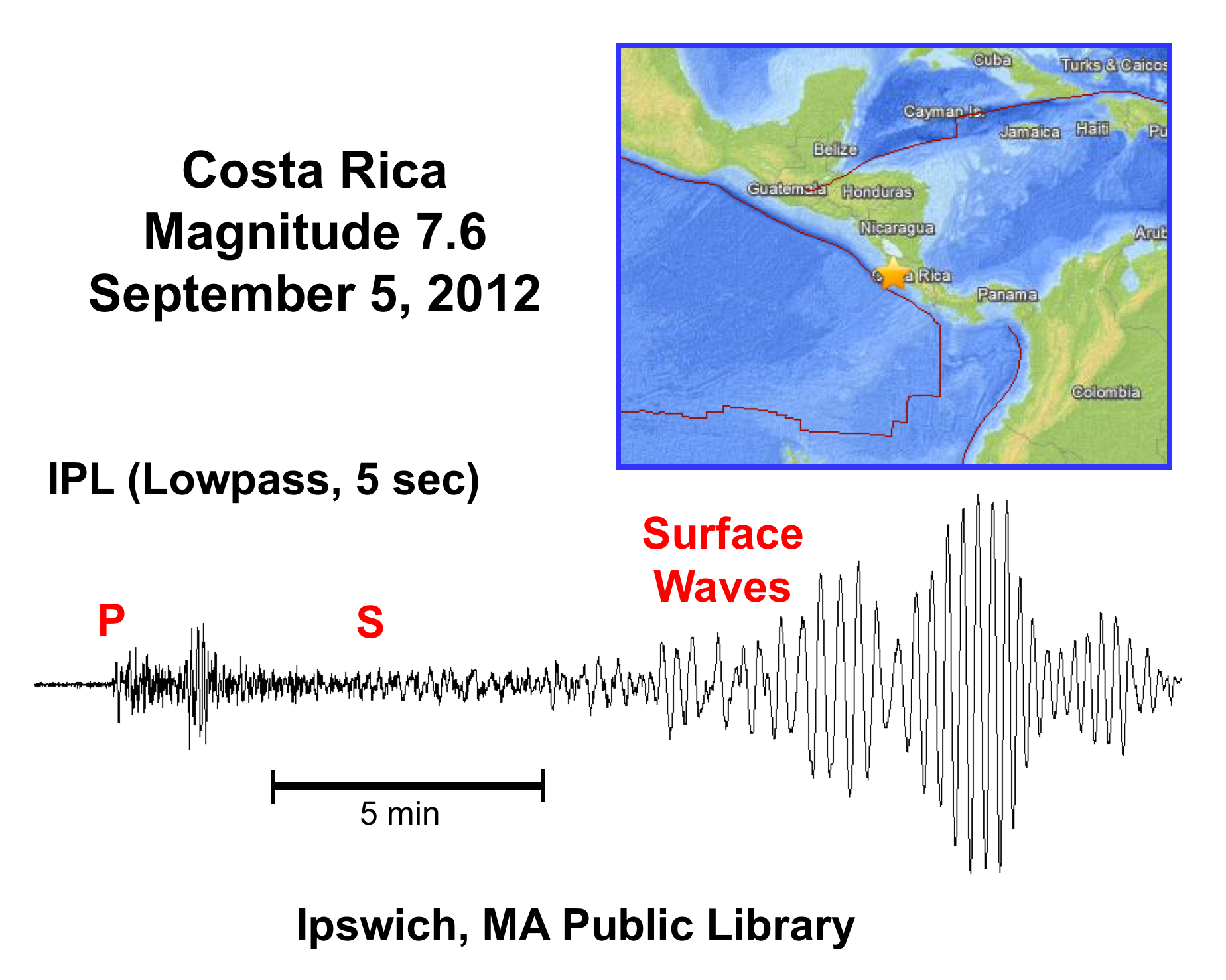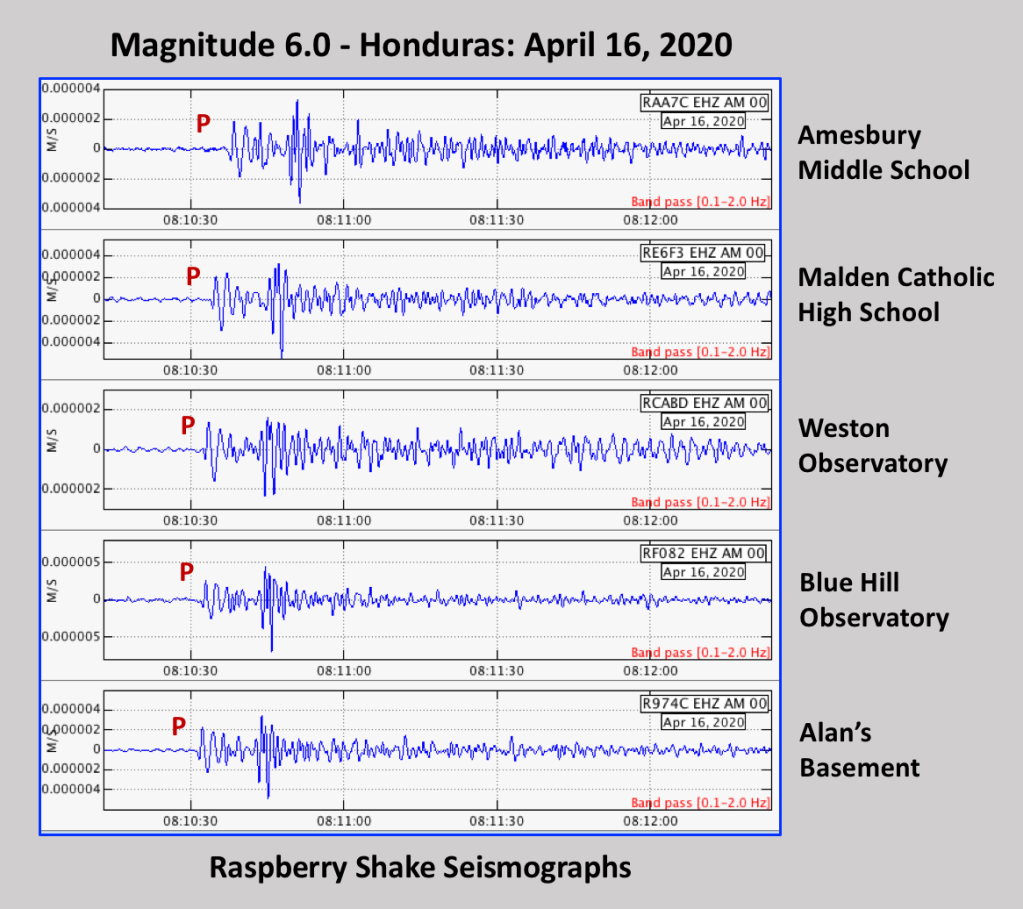A seismogram is an amazing thing…
Alan Kafka
Weston Observatory
Department of Earth and Environmental Sciences
Boston College
A seismogram is an amazing thing… – Earthquakes and Related Matters (wordpress.com)
There are many excellent online videos and educational materials describing all aspects of seismology and seismograms, and for great examples, I highly recommend IRIS Earthquake Science.
But, just taking a moment to think about the bigger picture, and to get a more qualitative sense of what most seismograms you tend to see—and the ones I find most interesting—actually are:
We are living on a very active planet, and many earthquakes happen here every day. When a large earthquake occurs, it generates seismic waves that (unless the earthquake is very large, and/or you are very near the epicenter) are generally too small for people to feel. Even though we don’t feel them, these waves are often well recorded on seismographs at great distances (see examples below). As these seismic waves move through the Earth’s interior they are changed by variation in Earth structure along their path from the earthquake to the seismograph’s location. You can think of these waves as “silent waves” that are often happening right beneath your feet, but have motion that is so small it is not felt by people. The purpose of a seismograph is to magnify this motion, and plot it on a seismogram, so it can be “seen” by people (or maybe better, “heard” by seismographs).
And what is remarkable about these subtle, silent waves, is that when they are recorded on seismograms, the arrival times and shapes of the waves are systematic enough that seismologists can interpret them to determine a very complete story about such things as: where the earthquake occurred, how big it was, how deep it was, and how its fault moved. Furthermore, seismologists can also interpret the waves to determine the structure of the Earth in the region that the waves traveled through.
That is a big part of the science of seismology, and that’s amazing!






Keine Kommentare:
Kommentar veröffentlichen